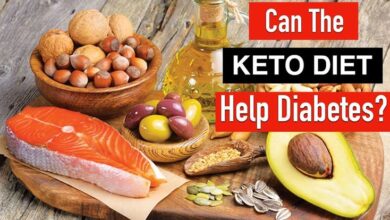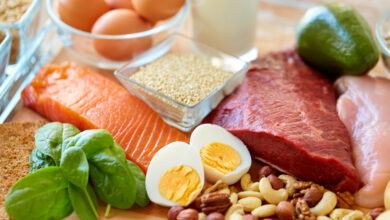The 18 Best Low-Carb Vegetables to Eat on the Keto Diet for Fast Weight Loss and Better Health

When you start the keto diet, one of the biggest adjustments is rethinking your relationship with food. You quickly learn that it’s not just about cutting out bread, pasta, and sugary snacks—it’s also about choosing the right vegetables. Yes, vegetables contain carbs too, and if you’re not careful, they can add up and push you out of ketosis. That’s frustrating, especially when you thought you were eating “healthy.”
The beauty of keto is that it doesn’t mean you stop eating vegetables altogether. Instead, you focus on low-carb options that fuel your body with essential nutrients without jeopardizing your progress. Vegetables are more than just fillers on a plate—they’re loaded with vitamins, minerals, fiber, and antioxidants that keep your body strong, your digestion smooth, and your immune system resilient.
For people in Africa and Europe, where food diversity is wide and cultural meals often include carbohydrate-rich ingredients, understanding which vegetables are keto-friendly becomes even more crucial. From green leafy favorites like spinach to versatile staples like cauliflower, keto-friendly veggies allow you to keep enjoying meals without guilt.
In this detailed guide, we’ll explore the 18 best low-carb vegetables for keto, breaking down their carb counts, health benefits, and the best ways to enjoy them. By the end, you’ll have a clear roadmap to navigate your next grocery trip while staying fully aligned with your keto goals.
Read Also 10 Best Keto Foods for Diabetes Management: Control Blood Sugar Naturally
Why Vegetables Matter on the Keto Diet
Vegetables play a central role in keto, even if they aren’t the star of the show like fats and proteins. While keto emphasizes avocados, cheese, meat, and oils, vegetables provide nutrients that are impossible to ignore. They are the backbone of your micronutrient intake, supplying vitamins like A, C, K, and B-complex, along with minerals like magnesium, potassium, and calcium.
Another major reason vegetables are important is fiber content. When you eliminate most carb sources, constipation becomes a common side effect. Vegetables help counteract this by providing soluble and insoluble fiber, which supports digestion and keeps your gut microbiome healthy.
Eating vegetables also supports blood sugar control. The high fiber and low sugar profile of keto-friendly veggies prevent spikes, which is especially beneficial for people with type 2 diabetes or insulin resistance.
And let’s not forget: vegetables add variety and satiety. Imagine eating bacon and eggs every day without a colorful side dish. Vegetables make meals more interesting, provide texture, and help you feel fuller for longer.
Now let’s get into the stars of this article: the 18 best low-carb vegetables that you can enjoy guilt-free on your keto journey.
1. Spinach – The Keto Superfood
Spinach is a powerhouse vegetable and one of the most keto-friendly greens you’ll ever find. With only about 1 net carb per cup of raw spinach, it’s almost impossible to overeat your way out of ketosis with this leafy green.
What makes spinach stand out is its nutrient density. It’s packed with vitamin K (for bone health), vitamin A (for eye health), folate, magnesium, and iron. In fact, just a small serving gives your body a solid dose of essential micronutrients.
Spinach is also incredibly versatile. You can add it to salads, stir-fries, soups, or even blend it into keto smoothies without affecting the flavor much. When cooked, it shrinks down significantly, which means you can eat a large portion for minimal carbs.
Another benefit? Spinach contains plant compounds like lutein and zeaxanthin that support eye health and reduce oxidative stress. For people on keto who are concerned about overall wellness, spinach is a must-have.
Pro tip: pair spinach with a healthy fat like olive oil or avocado to enhance the absorption of fat-soluble vitamins.
2. Kale – Nutrient-Dense and Low-Carb
Kale often gets called a “superfood,” and for good reason. With about 3–4 net carbs per 100 grams, kale is keto-friendly and bursting with nutrients.
It’s rich in vitamins A, C, and K, along with antioxidants that fight inflammation and support immunity. Kale is also one of the best plant-based sources of calcium, making it an excellent choice for those who don’t consume dairy.
One of kale’s unique benefits is its high fiber content, which keeps you full and supports digestion. Its slightly bitter taste pairs well with creamy dressings, garlic, or even a sprinkle of parmesan cheese for a quick keto-friendly side dish.
Kale chips are also a great low-carb snack alternative. Simply bake the leaves with olive oil and sea salt, and you’ve got a crunchy, guilt-free replacement for potato chips.
For Africans and Europeans used to incorporating leafy greens in stews, kale can easily replace higher-carb vegetables without altering the flavor profile of traditional dishes.
3. Broccoli – A Keto Staple for Energy and Immunity
Broccoli is a cruciferous vegetable loved by keto enthusiasts worldwide. With only 4 net carbs per 100 grams, it fits perfectly into the low-carb lifestyle.
Beyond carbs, broccoli provides vitamin C, vitamin K, and folate, all of which support immune function and bone health. It’s also a great source of fiber, helping balance your digestion.
One standout benefit of broccoli is its sulforaphane content, a compound linked to reduced cancer risk and improved heart health. For people managing lifestyle diseases in Africa and Europe, this makes broccoli a preventive powerhouse.
Broccoli can be steamed, roasted, stir-fried, or even blended into soups. Pair it with cheese for a comforting, keto-friendly broccoli and cheese bake, or roast it with garlic for a simple side dish.
Its versatility makes it one of the easiest vegetables to fit into your keto meal plan, whether you’re cooking a Western-style dish or a traditional stew.
4. Cauliflower – The Keto Chameleon
Cauliflower has earned the nickname “the keto chameleon” because it can be transformed into so many carb-heavy favorites. With only 2–3 net carbs per 100 grams, cauliflower is one of the most versatile vegetables you’ll ever use.
Cauliflower rice is a staple for keto dieters who miss rice. Simply pulse raw cauliflower in a blender and sauté—it looks and feels like rice but won’t spike your carbs. You can also use cauliflower as a base for pizza crusts, mashed potatoes, and even gnocchi.
Nutritionally, cauliflower is rich in vitamin C, vitamin K, and folate. It’s also full of antioxidants that fight inflammation and support brain health.
For people in regions where rice and bread are cultural staples, cauliflower makes keto sustainable without giving up your favorite dishes. It adapts seamlessly into African jollof rice (using cauliflower rice) or European-inspired casseroles.
This vegetable truly deserves a permanent place in your fridge if you’re serious about long-term keto success.
5. Zucchini – Perfect for Keto Noodles
Zucchini is another keto favorite with only 2–3 net carbs per 100 grams. Its mild taste and soft texture make it the perfect substitute for pasta when spiralized into “zoodles.”
For people missing spaghetti, zucchini noodles are a lifesaver. They soak up sauces beautifully, giving you a guilt-free way to enjoy Italian-inspired meals without the carbs.
Zucchini is also rich in vitamin C, manganese, and antioxidants like lutein and zeaxanthin, which support skin and eye health. Its high water content keeps you hydrated while also promoting fullness.
You can grill zucchini, roast it, bake it into casseroles, or use it as a base for keto-friendly fritters. In African kitchens, it can even be added to soups and stews without overpowering other ingredients.
Its versatility, hydration benefits, and low carb content make zucchini one of the best vegetables for anyone on keto.
6. Cabbage – The Affordable Keto Hero
Cabbage is often overlooked, but it’s one of the most budget-friendly and keto-friendly vegetables available. With 3 net carbs per 100 grams, it’s both affordable and highly nutritious.
Cabbage is rich in vitamin C and vitamin K, plus antioxidants that fight inflammation. It’s also extremely filling, thanks to its fiber content.
This humble vegetable works well in soups, stir-fries, and salads. Fermented cabbage (sauerkraut) is also keto-friendly and adds probiotics that improve gut health.
For Africans, cabbage pairs perfectly with stews, grilled meats, and stir-fries. For Europeans, it’s a staple in classic dishes like coleslaw and braised cabbage.
Its affordability and versatility make it a must-have for keto dieters on a budget.
7. Lettuce – The Carb-Free Base for Salads
Lettuce is the go-to base for keto salads. With less than 1 net carb per cup, it’s practically carb-free.
Lettuce is light, refreshing, and hydrates the body while providing fiber for digestion. While it doesn’t offer as many vitamins as other greens, it’s perfect as a vehicle for nutrient-rich toppings like avocado, grilled chicken, or boiled eggs.
You can also use lettuce leaves as wraps, replacing bread for burgers, tacos, or sandwiches. This trick is popular among keto dieters who crave handheld meals without carbs.
Whether you’re in Lagos or London, lettuce is an easy, accessible choice for keeping your meals light and keto-friendly.
8. Asparagus – A Weight Loss Secret
Asparagus is a highly nutritious vegetable with just 2 net carbs per 100 grams.
It’s loaded with vitamin K, vitamin C, folate, and antioxidants, making it a superfood for keto followers. One unique benefit is its diuretic effect, which helps reduce bloating and water retention—a common frustration when adjusting to keto.
Asparagus can be roasted, grilled, or sautéed. Pair it with butter, olive oil, or parmesan cheese for a simple yet delicious side dish.
It’s especially popular in European cuisine but also fits perfectly into African meals where light, fresh sides are needed to balance heavier dishes.
9. Cucumbers – Hydrating and Refreshing
Cucumbers are about 95% water and contain only 1–2 net carbs per 100 grams.
They’re excellent for hydration, especially in hot climates across Africa and Europe. Cucumbers are rich in antioxidants, help reduce blood pressure, and keep digestion smooth.
You can enjoy cucumbers raw in salads, slice them into water for a refreshing drink, or dip them in guacamole or hummus for a crunchy snack.
Their cooling effect also makes them perfect for balancing spicy dishes, making them a favorite in African kitchens.
10. Bell Peppers – Colorful and Nutrient Rich
Bell peppers are not only colorful but also keto-friendly, with about 4 net carbs per 100 grams.
They’re packed with vitamin C, vitamin A, and antioxidants, which strengthen immunity and protect against oxidative stress.
Bell peppers add flavor and crunch to salads, stir-fries, omelets, and fajitas. You can also stuff them with cheese or ground meat for a complete keto meal.
In African cooking, bell peppers are often used as a base for sauces. On keto, you can still enjoy them in moderation.
11. Mushrooms – Meaty and Low-Carb
Mushrooms are an excellent low-carb option with only 2 net carbs per 100 grams.
They’re rich in B vitamins, selenium, and antioxidants, which support energy production and immunity.
Mushrooms have a meaty texture that makes them perfect for keto-friendly substitutes in dishes where you want to cut down on meat without losing satisfaction.
They can be sautéed, grilled, stuffed, or added to soups and stews. In both African and European cuisines, mushrooms add depth and umami flavor to meals.
12. Green Beans – A Moderate but Safe Option
Green beans are slightly higher in carbs, with about 4–5 net carbs per 100 grams, but they can still fit into a keto plan when eaten in moderation.
They’re a good source of vitamin C, vitamin K, and folate, along with fiber.
Green beans are easy to prepare—steam them, sauté with garlic, or roast them with olive oil. They’re a great side dish for grilled meats or fish.
For Africans, green beans often feature in mixed vegetable stews. Europeans also enjoy them in casseroles and salads.
13. Eggplant – The Low-Carb Mediterranean Favorite
Eggplant has about 3 net carbs per 100 grams and is very versatile.
It’s rich in fiber, antioxidants like nasunin, and potassium, which support heart health.
Eggplant works well in Mediterranean dishes like ratatouille, but it can also be grilled, roasted, or baked with cheese for a hearty, low-carb meal.
In Africa, eggplant (known as garden egg) is a popular vegetable, often eaten raw with peanut sauce or cooked into stews.
14. Celery – Crunch Without the Carbs
Celery is another ultra-low-carb veggie, with 1–2 net carbs per 100 grams.
It’s light, crunchy, and hydrating, making it a great snack option on keto. Pair it with cream cheese, peanut butter, or guacamole for extra flavor and fat.
Celery also contains antioxidants and compounds that may reduce inflammation.
While it doesn’t have as many vitamins as leafy greens, its low carb count and versatility make it a keto staple.
15. Radishes – A Potato Alternative
Radishes contain 2 net carbs per 100 grams and can be used as a keto-friendly substitute for potatoes.
They’re crunchy and peppery when raw, but when roasted, they take on a softer, potato-like texture.
Radishes are rich in vitamin C and antioxidants, supporting skin and immune health.
For Africans and Europeans missing roasted potatoes, radishes are a perfect alternative.
16. Brussels Sprouts – A Mini Cabbage Packed With Goodness
Brussels sprouts contain about 4–5 net carbs per 100 grams, but their nutritional benefits are worth it.
They’re packed with vitamin C, vitamin K, and fiber, supporting immunity and digestion.
Roasted Brussels sprouts with olive oil and garlic are a keto classic. They can also be sautéed or steamed for side dishes.
Their slightly bitter taste pairs well with cheese or bacon for added flavor.
17. Swiss Chard – Overlooked but Powerful
Swiss chard contains 2–3 net carbs per 100 grams and is often overlooked.
It’s loaded with vitamin A, C, and K, plus magnesium and potassium.
Swiss chard can be sautéed with garlic and olive oil, added to soups, or used in stews. Its colorful stems also make it visually appealing.
For Africans and Europeans who enjoy leafy greens, Swiss chard is a fantastic, low-carb addition to meals.
18. Arugula – Peppery, Fresh, and Keto-Friendly
Arugula has only 2 net carbs per 100 grams and adds a peppery flavor to salads and dishes.
It’s rich in vitamin K, calcium, and antioxidants, making it excellent for bone and heart health.
Arugula can be eaten raw in salads, blended into keto pesto, or used as a topping for cauliflower-based pizzas.
Its unique taste helps break the monotony of traditional lettuce or spinach salads.
Comparison Table: Low-Carb Vegetables and Their Net Carb Count
| Vegetable | Net Carbs (per 100g) | Best Way to Eat |
|---|---|---|
| Spinach | 1g | Smoothies, salads |
| Cauliflower | 2g | Rice, pizza crust |
| Zucchini | 2g | Zoodles, stir-fry |
| Broccoli | 4g | Steamed, roasted |
| Cabbage | 3g | Soups, stir-fry |
| Bell Peppers | 4g | Salads, stuffed |
| Mushrooms | 2g | Grilled, stews |
| Eggplant | 3g | Roasted, stews |
| Arugula | 2g | Salads, pesto |
Conclusion
The keto diet doesn’t mean you have to give up vegetables. In fact, the right vegetables are essential for success. From leafy greens like spinach and kale to versatile options like cauliflower and zucchini, these low-carb vegetables provide vitamins, fiber, and antioxidants while keeping you in ketosis.
By adding these 18 vegetables to your meals, you’ll not only lose weight faster but also support long-term health. Whether you’re in Africa enjoying okra soups or in Europe cooking Mediterranean classics, there’s always a keto-friendly vegetable to fit your lifestyle.
Eat smart, stay consistent, and let vegetables fuel your keto journey.
Read Also How to Choose Keto Foods for Diabetes Management: Proven Diet Tips for Blood Sugar Control
FAQs
1. Can I eat carrots on the keto diet?
Carrots are higher in carbs than leafy greens. Small amounts are fine, but avoid eating them in large servings.
2. Are tomatoes keto-friendly?
Yes, but in moderation. Tomatoes contain more natural sugars than leafy greens, so track your intake.
3. What vegetables should I avoid on keto?
Avoid starchy vegetables like potatoes, sweet potatoes, corn, and peas.
4. How many vegetables should I eat daily on keto?
Aim for at least 2–3 cups of leafy greens and 1–2 cups of other keto-friendly vegetables.
5. Can I eat African vegetables like okra or bitter leaf on keto?
Yes! Many African vegetables, including okra, bitter leaf, and fluted pumpkin leaves, are naturally low in carbs and perfect for keto.




